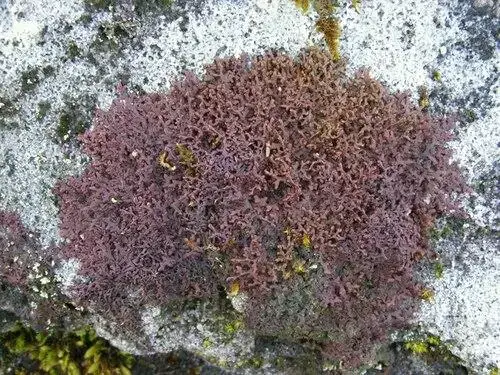
medium.jpg from: https://enciclovida.mx/especies/137030-frullania
Exploring the Fascinating World of Frullania lagenifera Schwägr. Moss
Introduction
Mosses are often overlooked, but they play crucial roles in ecosystems around the world. One particularly interesting species is Frullania lagenifera Schwägr., a member of the Frullaniaceae family. In this blog post, we’ll dive into the captivating world of this tiny but mighty plant.
Background
Frullania lagenifera Schwägr., commonly known as Frullania, is a type of leafy liverwort moss belonging to the class Jungermanniopsida in the division Marchantiophyta. This species is found in many parts of the world and exhibits some unique adaptations.
Morphology and Identification
Frullania lagenifera forms small, reddish-brown mats on tree bark, rocks, and other surfaces. Its leaves are deeply divided into two lobes – a larger dorsal lobe and a smaller, hood-shaped ventral lobe called a “lobule”. This distinctive leaf shape helps with identification.
The species name “lagenifera” means “flask-bearing”, referring to the flask-shaped lobules. Under a microscope, you can also see that Frullania leaves have a network of elongated cells and lack a midrib, which is typical of liverwort mosses.
Global Distribution and Habitat
Frullania lagenifera has a wide distribution, found in tropical and subtropical regions across the Americas, Africa, Asia, and the Pacific. It grows in moist, shaded habitats like forests, often as an epiphyte on tree trunks and branches.
This adaptable moss can tolerate a range of environmental conditions, from lowland rainforests to misty mountain forests. It plays a role in these ecosystems by providing shelter for small invertebrates and helping to regulate moisture.
Ecological Roles and Adaptations
Like other mosses, Frullania contributes to nutrient cycling, water retention, and prevention of soil erosion in its habitats. Its mat-like growth traps moisture, providing micro-habitats for insects and other small organisms.
Interestingly, the lobules of Frullania lagenifera are adapted to capture and digest micro-organisms in a process called “protocarnivory”. This adaptation allows the moss to obtain nutrients in addition to what it gets from photosynthesis and its substrate.
Conclusion
From its intriguing leaf shape to its widespread distribution and ecological roles, Frullania lagenifera Schwägr. is a prime example of how mosses are much more than meets the eye. The next time you see a small reddish mat on a tree trunk, take a closer look – it might just be this fascinating Frullania! What other secrets do you think the world of mosses holds?